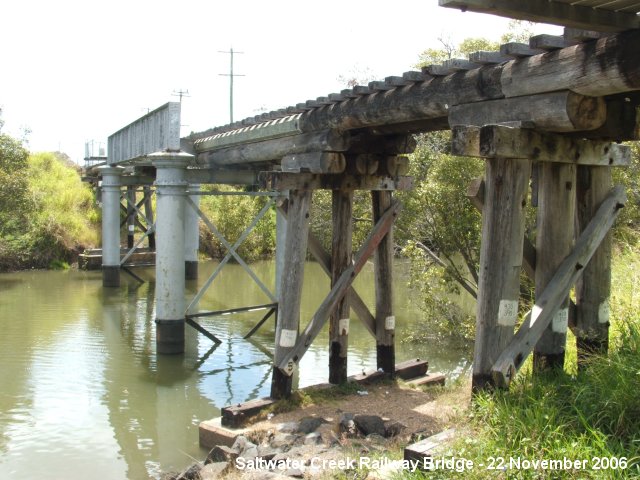A Bridge is a structure built to span a gorge, valley, road, railroad track, river, body of water, or any other physical obstacle.

Council owned bridges typically exist to allow vehicles and/or pedestrians to access to areas that would be otherwise inaccessable or only accessable via a longer alternate route.

The Glossary of Austroads Terms defines a bridge as a structure designed to carry a road or path over an obstacle by spanning it.
The Victorian Code of Practice for Operational Responsibility for Public Roads (May 2017) states that the term bridge encompasses 'all structures, including culverts, on, over or under a road that have a single span or diameter of 1.8 metres or greater, or have a waterway area of 3 m² or greater and includes all structural components (eg. abutments, wing walls, approach slabs, retaining walls, traffic safety barriers), and associated pathways, within the limits of the structure, but excludes approach embankments.'
The Naming Rules for Places in Victoria
describe a bridge as:
 (a) A man made structure carrying a ROAD or other transportation system over a WATERCOURSE, RAILWAY, ROAD or other obstruction;
(a) A man made structure carrying a ROAD or other transportation system over a WATERCOURSE, RAILWAY, ROAD or other obstruction;
 (b) A natural BRIDGE, a bridge or arch of natural rock.
(b) A natural BRIDGE, a bridge or arch of natural rock.
It notes the responsibility for naming bridges rests with either the local Council or VicRoads
.
Wikipedia lists six main types of bridges: beam bridges, cantilever bridges, arch bridges, suspension bridges, cable-stayed bridges and truss bridges.
The majority of new local government controlled bridges are probably constructed from pre-cast concrete segments. Timber was a common bridge construction material in the past, and is still used in the construction of footbridges , but it is not common for new road bridges to be constructed from timber.
Bridges are sometimes broken up into several components in an asset register, including;
The useful life of a bridge will depend on the type of bridge, the material from which it is constructed and a range of environmental & other factors. A life of 30-100 years is typical for bridges channel in some areas. Bridges designed for vehicular traffic typically have a longer design life than those designed for pedestrians.
The table below shows the useful life for road bridges adopted by a number of Councils or suggested by other organisations.
| Council/Organisation | Adopted Life |
|---|---|
| Banyule City Council | 100 years |
| Corowa Shire Council | 100 years |
| Hume City Council | 50-100 years |
| Indigo Shire Council | 80-130 years |
| Latrobe City Council | 60-75 years |
| Loddon Shire Council | 80-100 years |
| Mitchell Shire Council | 80-100 years |
| National Asset Management Manual | 30-80 years |
| Knox City Council | 100 years |
| Warrnambool City Council | 70-200 years |
| Whittlesea City Council | 40-100 years |
| Wodonga City Council | 41-118 years |
The table below shows the useful life for pedestrian bridges adopted by a number of Councils or suggested by other organisations.
| Council/Organisation | Adopted Life |
|---|---|
| Banyule City Council | 35-150 years |
| Indigo Shire Council | 30-80 years |
| Knox City Council | 30-100 years |
| Tea Tree Gully City Council | 25-50 years |
| Warrnambool City Council | 30-100 years |
| Whittlesea City Council | 25-80 years |
The maintenance of timber bridges is an issue for many rural Councils. Fortunately the Queensland Main Roads Timber Bridge Maintenance Manual
, which can be downloaded free of charge from the Main Roads website covers the maintenance of timber bridges in great detail.
As with other timber structures, timber bridges should be checked and treated for termites on a regular basis.
The VicRoads Road Structures Inspection Manual
suggests that bridges should be the subject of a Routine Maintenance Inspection
at least twice a year.
There are a number of Condition Assessment Techniques that can be applied to bridges, including;
In Victoria, bridges which form part of a roadway, pathway or shoulder are considered to be road infrastructure, and Council
has a statutory duty to inspect, maintain and repair them under the Road Management Act.
The legislative basis for the provision, maintenance and repair of non-road bridges is less clear, but the Victorian Local Government Act 1989 lists "planning for and providing services and facilities for the local community" as a local government function, and bridges in parks are typically provided as a service to or as part of a facility for the local community.